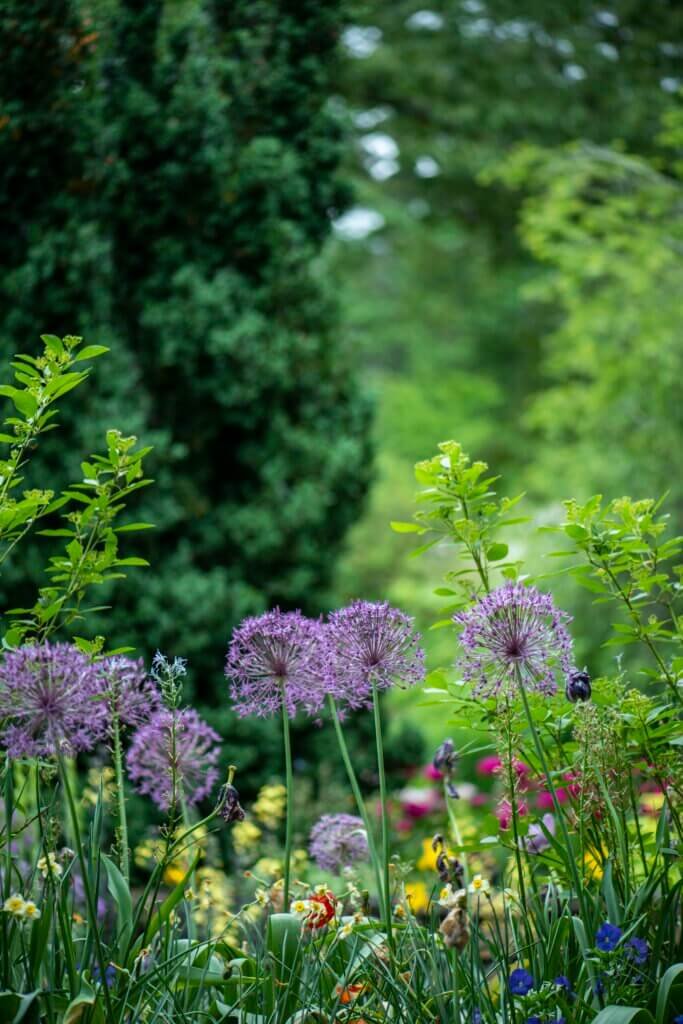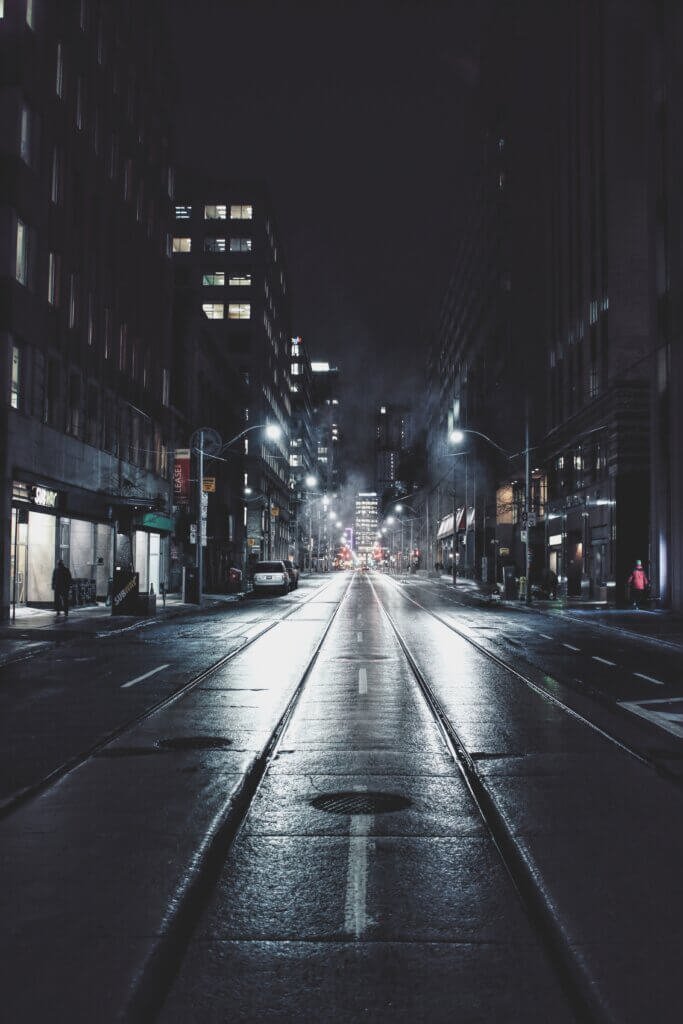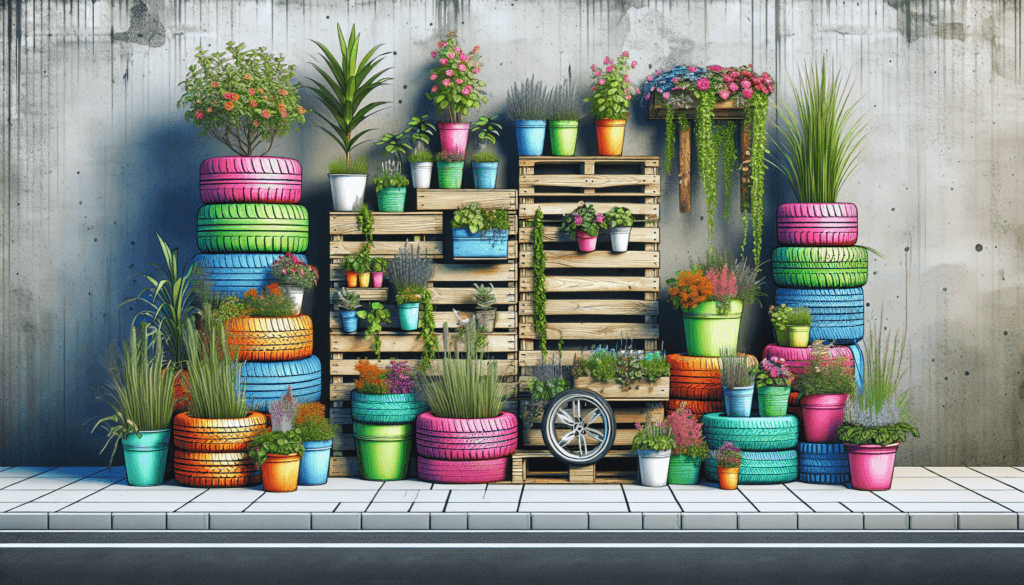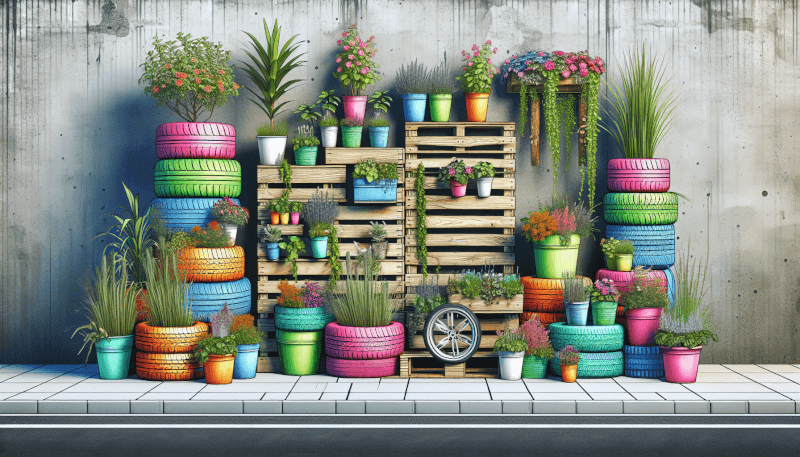In the world of urban gardening, creativity knows no bounds. As we strive to find sustainable and eco-friendly solutions, the concepts of upcycling and repurposing have taken center stage in urban garden design. With a touch of imagination and resourcefulness, everyday objects can be transformed into stunning planters, vertical gardens, and even art installations. In this article, we’ll explore the inspiring ways in which upcycling and repurposing are being embraced in urban garden design, bringing beauty and functionality to even the smallest of spaces. Get ready to be amazed by the endless possibilities that await you in the world of upcycling and repurposing.

1. Introduction
Urban gardens are becoming increasingly popular as more people are seeking ways to connect with nature in urban environments. However, designing a garden in a limited space can be a challenge. That’s where upcycling and repurposing come into play. By utilizing discarded materials and giving them new life, you can create a unique and sustainable urban garden design. In this article, we will explore what upcycling and repurposing are, the benefits they bring to urban gardens, materials and objects that can be repurposed, techniques and ideas for incorporating upcycling in your garden, challenges you may face, and inspiring examples to fuel your creativity.
2. What is Upcycling and Repurposing?
2.1 Definition
Upcycling and repurposing involve taking old or discarded materials and transforming them into something new and useful. The difference between the two lies in the level of modification. Upcycling often involves enhancing the original material, while repurposing involves using an item for a different purpose than its original intention. Both practices embrace creativity and sustainability, making them perfect for urban garden design.
2.2 Purpose of Upcycling and Repurposing in Urban Garden Design
In urban garden design, upcycling and repurposing serve several purposes. Firstly, they allow you to make the most of limited space by utilizing materials that are already available rather than buying new ones. Secondly, upcycling and repurposing promote environmental sustainability by reducing waste and diverting items from landfills. Lastly, these practices add a unique and personal touch to your garden, making it a true reflection of your creativity and individuality.

3. Benefits of Upcycling and Repurposing in Urban Garden Design
3.1 Environmental Sustainability
One of the major benefits of upcycling and repurposing in urban garden design is their positive impact on the environment. By giving new life to discarded materials, you are reducing the demand for new resources and minimizing the amount of waste that ends up in landfills. Additionally, upcycling and repurposing require less energy compared to manufacturing new products, further reducing your carbon footprint and contributing to a more sustainable future.
3.2 Cost-effectiveness
Creating an urban garden can be an expensive endeavor, especially when purchasing new materials and products. However, upcycling and repurposing offer a cost-effective alternative. By transforming old or unwanted items into garden elements, you can significantly cut down on expenses while still achieving a visually appealing and functional garden design. It allows you to save money without compromising on the aesthetic appeal of your urban garden.
3.3 Creativity and Unique Design
Upcycling and repurposing encourage creativity and uniqueness in urban garden design. By reimagining the potential of everyday objects, you can create one-of-a-kind garden features that reflect your personality and style. Whether it’s turning an old ladder into a vertical planter or repurposing an antique bathtub as a pond, the possibilities are endless. Embracing upcycling invites you to think outside the box and infuse your garden with a touch of originality.
3.4 Reduced Waste and Landfill Diversion
It’s no secret that waste generation is a significant problem in urban areas. Upcycling and repurposing offer a solution to this issue by reducing the amount of waste that ends up in landfills. By giving unused items a new purpose in your garden, you are diverting them from the waste stream and extending their lifespan. This not only reduces the environmental impact but also sets an example for others to follow in creating a more sustainable society.
4. Materials and Objects for Upcycling and Repurposing
4.1 Recycled Containers and Planters
When it comes to upcycling and repurposing in urban garden design, containers and planters are prime candidates. Old buckets, tin cans, glass jars, and wooden crates can be transformed into charming pots for your plants. Get creative with paint, patterns, and textures to make them visually appealing. Remember to drill drainage holes to ensure proper water flow. By upcycling containers, you not only save money on buying new pots but also reduce waste by giving new life to discarded items.
4.2 Salvaged Furniture and Accessories
Old furniture and accessories can be repurposed to add functionality and aesthetics to your urban garden. Wooden pallets can be transformed into garden benches or used as plant stands. Vintage chairs or stools can be repainted and placed strategically in your garden to create cozy seating areas. Salvaged doors or window frames can serve as unique trellises or privacy screens. The possibilities are endless; all it takes is a little imagination to turn forgotten furniture into standout pieces in your garden.
4.3 Reused Building Materials
Building materials, such as bricks, stones, and wooden planks, can be salvaged from construction sites or repurposed from old structures to create stunning features in your urban garden. Bricks can be stacked to create raised beds or retaining walls. Stones can be used to line pathways or create a natural-looking pond. Wooden planks can be repurposed as stepping stones or used to construct raised planters. Reusing building materials not only adds character to your garden but also reduces the strain on natural resources.
4.4 Vintage and Antique Items
Give your urban garden a touch of nostalgia by incorporating vintage or antique items. Consider repurposing old metal watering cans as planters, or using vintage bottles as candle holders. Antique gates or fences can be transformed into garden arches or decorative panels. These unique items add a sense of history and charm to your garden while also showcasing your love for the past.
4.5 Natural and Organic Materials
Incorporating natural and organic materials into your urban garden design not only brings a sense of harmony but also promotes sustainability. Fallen tree branches can be repurposed as garden edging or turned into rustic plant hangers. Bamboo poles can be used as trellises for climbing plants. Seashells or driftwood can be used to create eye-catching garden art. By incorporating these materials, you are bringing a touch of nature into your garden while reducing your ecological footprint.

5. Techniques and Ideas for Upcycling and Repurposing in Urban Gardens
5.1 Vertical Gardens and Living Walls
Maximize space in your urban garden by incorporating vertical gardens and living walls. Upcycle old wooden pallets by attaching rows of pots or planters to create a vertical plant display. Repurpose old picture frames or wooden crates as wall-mounted planters. Vertical gardens not only save space but also add visual interest and bring nature to eye level.
5.2 Container Gardening
Container gardening is perfect for small urban spaces, and it also offers endless opportunities for upcycling and repurposing. Transform old plastic bottles into self-watering planters by cutting them in half and creating wicking systems. Use old teapots or coffee cans as unique plant pots. Get creative with paint and patterns to make your containers visually appealing.
5.3 DIY Garden Furniture and Structures
Create your own garden furniture and structures through upcycling and repurposing. Use reclaimed wooden pallets to construct a comfortable outdoor sofa or a dining table. Repurpose an old ladder as a vertical herb garden or a plant stand. Build a pergola using salvaged wooden beams or old doors. These DIY projects not only save money but also allow you to customize your garden according to your needs and style.
5.4 Recycled Watering Systems
Save water and repurpose old items by creating recycled watering systems. Use plastic bottles with small holes punched in the cap as drip irrigation or self-watering planters. Repurpose rain gutters or PVC pipes as vertical garden water channels. Collect rainwater in old barrels or buckets for later use in your garden. These techniques not only conserve water but also reduce waste by giving new life to discarded items.
5.5 Repurposed Garden Art and Decorations
Add a touch of whimsy to your urban garden by incorporating repurposed garden art and decorations. Turn old bicycle wheels into unique wind chimes. Repurpose broken china into mosaic stepping stones. Use discarded glass bottles to create colorful garden borders. By repurposing everyday items into decorative pieces, you can infuse your garden with personality and create a visual feast for the eyes.
6. Upcycling and Repurposing Challenges in Urban Garden Design
6.1 Limited Space and Structural Constraints
Urban gardens often come with limited space and structural constraints that can pose challenges when it comes to upcycling and repurposing. It’s important to carefully plan your garden layout and choose items that can fit within the available space without compromising functionality. Consider vertical gardening, hanging planters, or utilizing underutilized areas such as walls and fences to maximize space.
6.2 Accessibility and Safety
When repurposing and upcycling objects for your urban garden, consider accessibility and safety. Ensure that pathways are clear and easily navigable, especially for those with mobility issues. Avoid using sharp or hazardous materials that could pose a risk to children or pets. Prioritize safety while still maintaining the aesthetic appeal of your garden.
6.3 Maintenance and Durability
Upcycled and repurposed items may require regular maintenance to ensure their longevity and functionality. Consider the specific needs of each material or object you choose to repurpose and take the necessary steps to maintain them accordingly. This may include regular cleaning, sealing, or reapplication of protective coatings. Investing time and effort into proper maintenance will help prolong the lifespan of your upcycled garden elements.
6.4 Harmonizing Design and Functionality
Finding the balance between design aesthetics and functionality can be a challenge when incorporating upcycled and repurposed items in your urban garden. While it’s important to create a visually stunning garden, it’s equally crucial to ensure that the repurposed elements serve their intended purpose effectively. Strive for a harmonious blend of design and functionality to create a garden that is both visually appealing and practical.

7. Examples of Upcycled and Repurposed Urban Gardens
7.1 Rooftop Gardens
Rooftop gardens are a prime example of how upcycling and repurposing can transform unused spaces into green oases. By utilizing recycled containers, salvaged furniture, and repurposed building materials, you can create a beautiful garden in an otherwise overlooked area. Vertical gardens, container gardening, and repurposed water features can all be incorporated to maximize space and add greenery to the urban landscape.
7.2 Balcony and Terrace Gardens
Balcony and terrace gardens offer a small but valuable space for upcycling and repurposing. By using recycled containers and vertical gardening techniques, you can transform these areas into lush retreats. Salvaged furniture, repurposed accessories, and creative lighting can add charm and functionality to your balcony or terrace garden. With a little ingenuity, even the smallest urban spaces can be transformed into thriving green havens.
7.3 Community Gardens
Community gardens provide an excellent opportunity for upcycling and repurposing on a larger scale. By collectively utilizing materials and resources, community members can create sustainable and visually appealing gardens. Upcycled planters, repurposed furniture, and shared composting systems are just a few examples of how community gardens can thrive through collective creativity and resourcefulness.
7.4 Container Gardens in Small Spaces
In urban areas with limited outdoor space, container gardens offer a flexible solution. By repurposing and upcycling containers, such as old buckets, wash basins, or even shoes, you can create a unique and vibrant garden. Vertical gardening techniques, such as attaching small pots or planters to fences or walls, maximize the use of space while adding visual interest. Container gardens are a perfect gateway to upcycling and repurposing for those with limited space.
8. Inspirational Upcycling and Repurposing Ideas for Urban Gardens
8.1 Upcycled Pallet Planters
Transform old wooden pallets into vertical planters by attaching pots or planters to the slats. Paint the pallet or leave it as-is for a rustic look. Lean it against a wall or fence to create a vertical garden feature that maximizes space and adds a unique touch to your urban garden.
8.2 Tire Raised Beds
Repurpose old tires into raised beds for your urban garden. Stack multiple tires on top of each other and fill them with soil to create planting spaces. The circular shape of the tire beds adds visual interest, while the depth allows the roots of plants to thrive. Choose vibrant colors or paint the tires to match the style of your garden.
8.3 Repurposed Birdhouses and Feeders
Old birdhouses and feeders can be repurposed in creative ways to enhance your urban garden. Attach them to trees or posts to create charming garden decorations. Fill them with succulents or trailing plants for a unique twist. Not only do these repurposed items add visual interest, but they also provide havens for birds and contribute to the biodiversity of your garden.
8.4 Wine Barrel Herb Gardens
Repurpose wine barrels into herb gardens by cutting them in half and filling them with soil. The natural wooden texture of the barrels adds a rustic charm to your urban garden. Plant various herbs for culinary use, and enjoy the convenience of having fresh ingredients at your fingertips while embracing sustainability.
8.5 Broken Pot Fairy Gardens
Instead of throwing away broken terracotta pots, repurpose them into enchanting fairy gardens. Arrange the broken pieces to create tiers and levels, mimicking a small landscape. Add miniature plants, tiny figurines, and decorative pebbles to bring your fairy garden to life. This whimsical upcycled creation will delight both adults and children.

9. Conclusion
Upcycling and repurposing have become essential practices in urban garden design. From recycled containers and salvaged furniture to vintage items and organic materials, the possibilities for creating a unique and sustainable urban garden are endless. By incorporating upcycled elements, you not only reduce waste and save money but also unleash your creativity and make a positive impact on the environment. The challenges you may encounter, such as limited space and maintenance considerations, can easily be mitigated with thoughtful planning. Let these ideas and examples inspire you to create your own upcycled and repurposed urban garden masterpiece that reflects your personality and love for nature.


